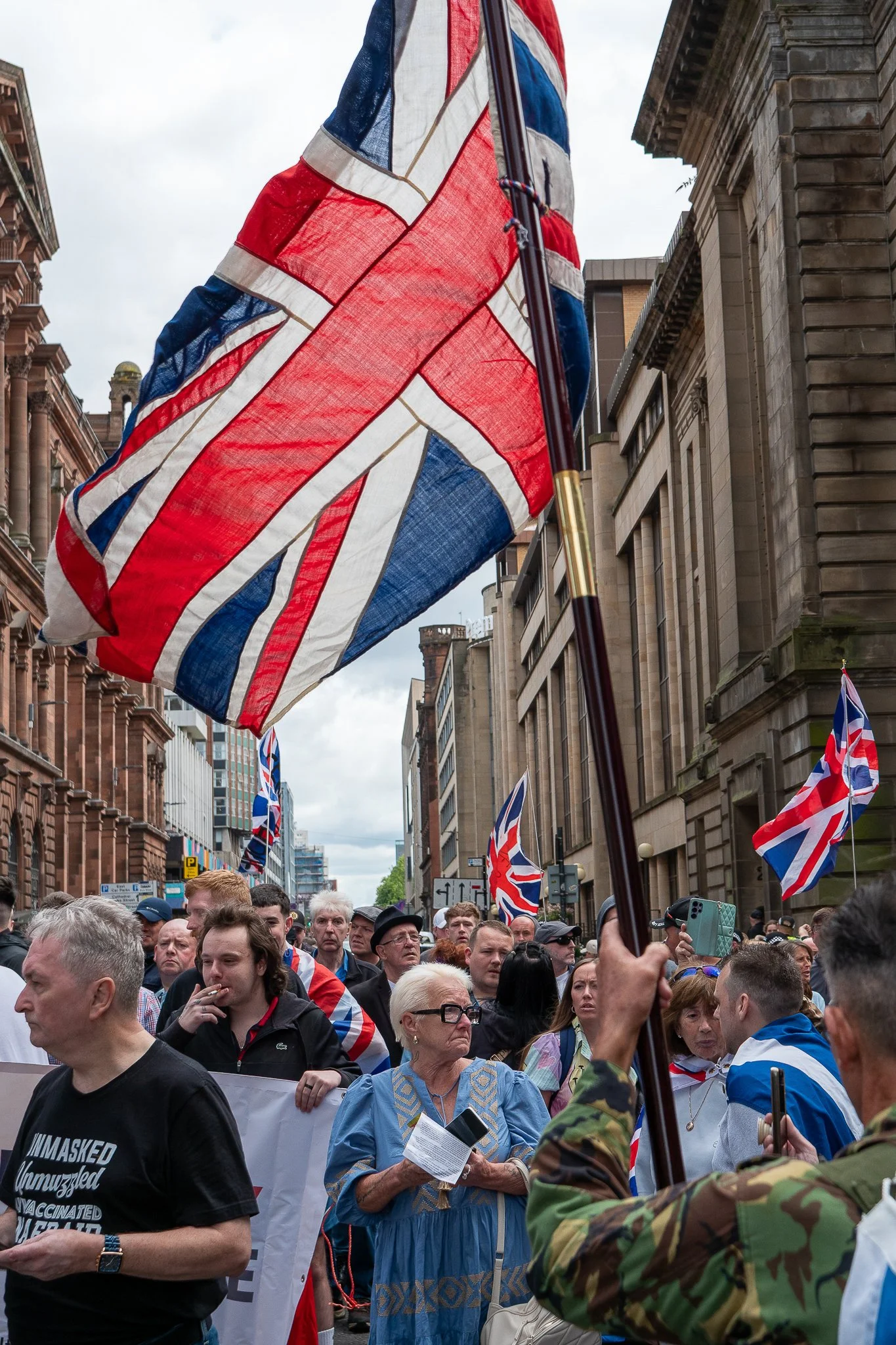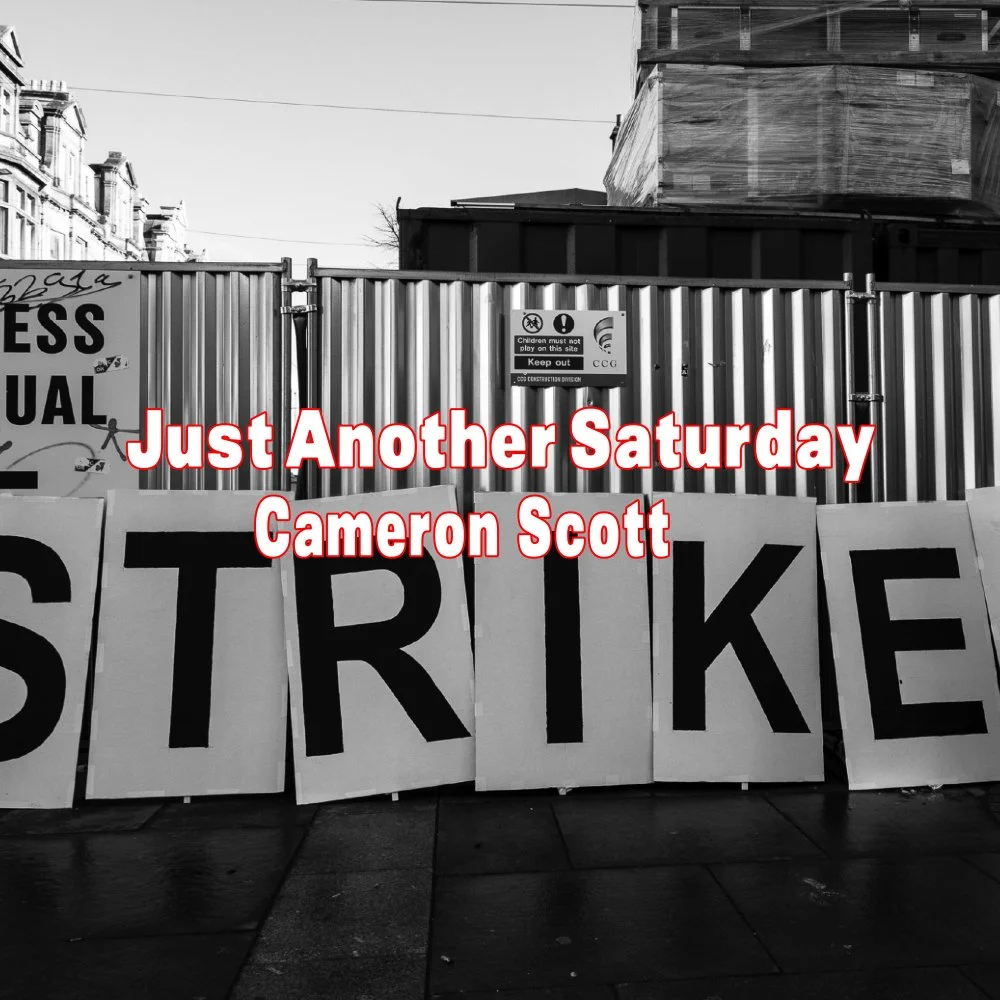Recording the life at hand through photography
UKIP March And Counter Demonstration In Glasgow
Just over a year ago, the Labour Party won a UK general election with a convincing majority, forming the government at Westminster. Promising "Change," the reality one year later is markedly different — or rather, it isn’t. We’re witnessing a continuation of the millionaire political class protecting wealth at the expense of those less fortunate in society.
The rise of the right, particularly Nigel Farage’s Reform UK, has seen Prime Minister Keir Starmer adopt the "Stop the Boats" mantra of the previous Conservative government. Successive cuts to public services have had a dramatic impact, particularly on NHS waiting times — and apparently, it’s all down to immigration.
I live in an area with relatively low levels of immigration, and yet I recently waited two and a half years for dental surgery to be carried out on the NHS — the governance of which is devolved to the Scottish Parliament in Edinburgh. But why let facts and reality get in the way of policy?
The growth of the political right has also led to a rise in public demonstrations. There have been two in Glasgow over the past year, both countered by significantly larger opposition protests led by Stand Up To Racism Scotland, supported by various trade unions and other left-wing grassroots organisations.
A third event can now be added to that list — with, predictably, the same outcome. The United Kingdom Independence Party (UKIP), led by Nick Tenconi, was granted permission by Glasgow District Council to hold a march and rally in the city centre on Saturday, 26 July.
The demonstration coincided with a visit to Scotland by US President Donald Trump, who was in the country for a few rounds of golf. With protests also taking place in Edinburgh, Ayrshire, and Aberdeen, Police Scotland’s resources were stretched beyond capacity, prompting reinforcements to be brought in from forces in England.
Stand Up To Racism Scotland once again mounted a counter-protest, claiming a prime spot in the city centre more than an hour before the UKIP procession was due to begin from its starting point, roughly 500 metres away. As always, the demonstrators were vocal and provided ample photo opportunities.
As the start time for the main UKIP march approached, I, along with a few close freelance friends, made my way across the city centre to meet it. A heavy police presence — including mounted officers — surrounded the several hundred activists in attendance.
Banners from smaller fringe right-wing groups were on display, but these were removed at Tenconi’s request before he began addressing the crowd. This was to be a UKIP-only event — part of their “Mass Deportations UK Tour.”
So far, UKIP has had no significant presence in Scotland. According to Tenconi, he was here to help the people of Glasgow "reclaim their streets." Or so he thought — as it turned out, the police had other plans.
In short, the UKIP procession was halted shortly after it began and then diverted to an area near its originally proposed endpoint — without ever setting foot in the city centre proper — much to Tenconi’s frustration.
However, I missed this. I had returned to the counter-protest, only to find demonstrators scattering through the streets at speed in search of the UKIP rally. For a brief period, it appeared the police had lost control — likely due, in part, to unfamiliarity with the local geography.
Eventually, order was restored. Officers managed to regain control, keeping both sides apart in containment zones ("kettles") positioned a considerable distance from each other.
Exhausted — and confident I had captured enough images to tell the story — I headed home to upload the photos to the news agency’s picture desk.
The following day, social media was awash with jubilant counter-protesters celebrating what they viewed as a successful disruption of the UKIP demonstration.
Given the current political climate, a repeat seems inevitable.

































